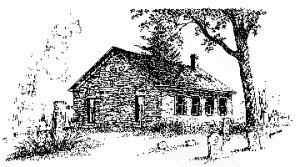Heritage Landmark for early mission to Native Americans

The Wyandotte Nation moved into Ohio in the mid-eighteenth century from Canada and Michigan. They settled on the Sandusky Plains. Their encounter with Methodism came in 1816, in the person of John Stewart.
Stewart (1786-1823) was converted at a Methodist camp meeting near Marietta, Ohio, and soon heard a call to preach. In response to an inner leading, he set off into the Ohio wilderness, traveling some 200 miles until he came to the Wyandotte settlement.
His preaching, his beautiful singing voice, and his personality eventually brought a number of people into the Methodist fold. Word of his successful work reached the general church, which responded in 1819 by forming a Missionary Society to support Stewart’s work among the Wyandottes. The Wyandotte Mission thus became the first church-wide mission of the Methodist Episcopal Church.
John Stewart’s health was never robust, and he was forced to retire while still a young man. His friends collected enough money to buy him a small farm, where he lived with his wife until his death in 1823. He was thirty-seven years old.
By that point, leadership of the mission had passed to James B. Finley (1781-1856) Finley came to the mission in 1821 in response to the Wyandottes’ request for a school. The following year, Finley and some of the chiefs travelled to Washington where they asked to use government funds to build a church. They received just over $1000, and built a limestone meetinghouse that was dedicated in 1824. Finley stayed with the mission until 1827.
“[T]he house was built out of good limestone, thirty by forty feet, and plainly finished. So these people have had a comfortable house to worship God in ever since. It will stand, if not torn down, for a century to come.” From James B. Finley’s 1840 history of the Wyandotte mission.
The mission continued until 1843, when the tribe was forced to emigrate to Kansas. Two acres of land on which the church and the burial ground stood were deeded to “the Methodists.”
The church was abandoned for some forty years, and deteriorated badly. In 1889, it was rebuilt on the same site using the original stones. Additional renovations were done in 1983.
Taken with permission from Heritage Landmarks: A Traveler’s Guide to the Most Sacred Places in The United Methodist Church, by the General Commission on Archives and History. For more information, see http://www.gcah.org/research/travelers-guide/wyandott-indian-mission




